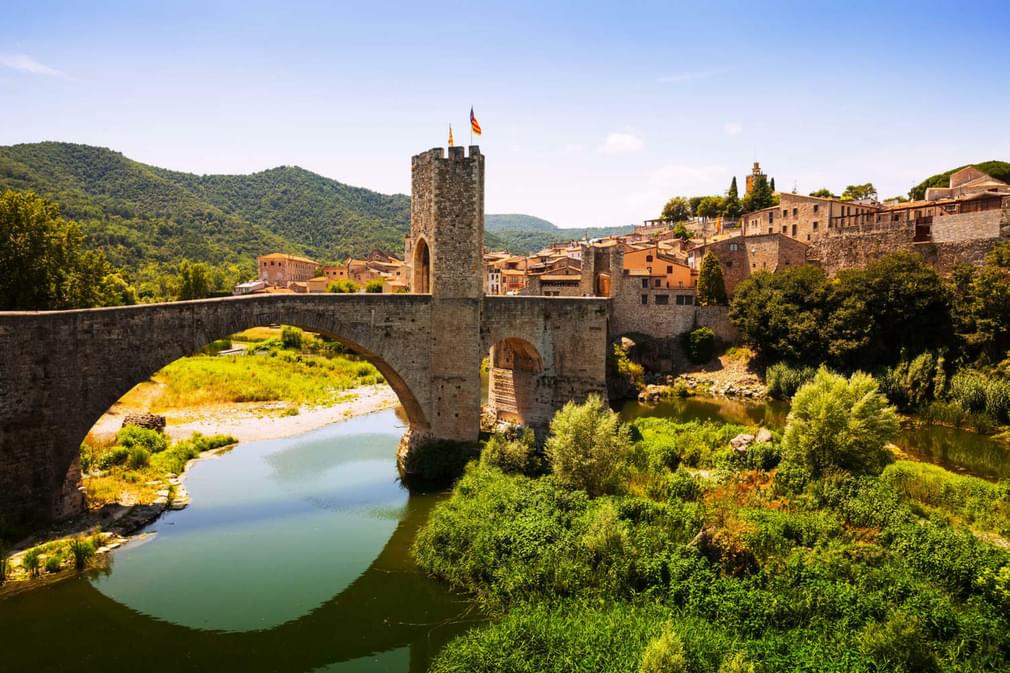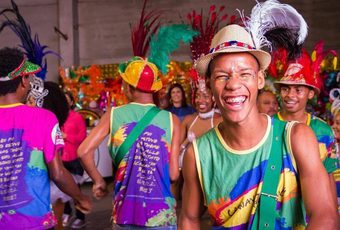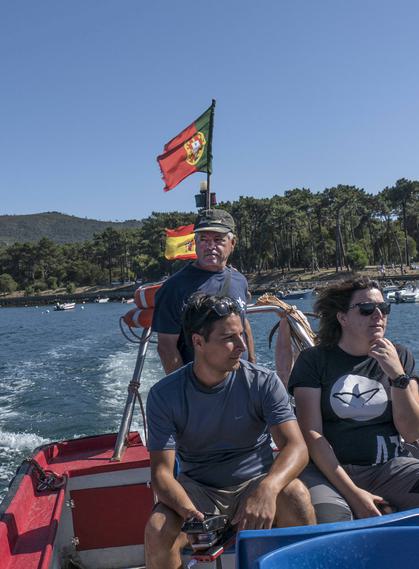Catalonia’s mind-blowing Concurs de Castells

Every two years in early October, thousands flock to the beautiful Spanish town of Tarragona to watch the ‘Concurs de Castells’, the gigantic human towers competition.
You may have already seen human pyramids but probably none like these, they can reach 12 metres in height.
The biennial Tarragona Human Tower Competition gathers together the best ‘colles castelleres’ (teams of castle-makers) of Spain - mostly from Catalonia - compete to create the best construction defined by its complexity and height.
The teams have five rounds to build their best towers. The final classification is based on the sum of points gained for the best three towers built by each team. The team with most points wins.
In the middle of the arena, the colourful towers rise tier by tier in a succession of six to nine stages. The human towers are formed by ‘castellers’ standing on the shoulders of one another.
First, the base of the tower called the ‘pinya’ is formed. Once done, the ‘gralla’ (traditional Catalan wind instrument) plays the traditional ‘Toc de Castells’ song to set the rhythm to build the stages of the ‘tronc’. Then to complete the tower, the ‘enxaneta’ (a child) has to climb to the summit and raise the hand ('aleta') in order to indicate the castle is done. Finally, the dismantling of the tower occurs layer by layer, starting with the highest tiers, it can often be the most dangerous part.
This terrific video will make you want to see this fantastic cultural experience in person!
The Catalan tradition of building human towers is said to originate back to ‘Balls de Valecians’ and ‘Moixigangues’ from the 15th century, which were dances that incorporated the construction of human towers.
Despite the turmoil of the Civil War and subsequent dictatorship and more recently by the serious economic crisis in Spain, the castell tradition is stronger than ever before.
Catalonia’s increasingly vocal demands for independence has presumably brought a surge in popularity for this uniquely Catalan phenomenon. The tower-building spectacle, central to Catalan culture, serves as an important source of regional pride and a point of differentiation from the rest of Spain.
Declared Cultural and Intangible Heritage of Humanity by UNESCO in 2010, the authorities now have responsibility to ensure the survival of the competition and also to promote it within cultural, educational and social spheres.
The international recognition has also helped generate new activities around human towers such as dance, music, concerts, fireworks, and street performances. And while other championships take place every year from June to November in Catalonia, the biennial ’Concurs de Castells’ of Tarragona is the most important one. If you want to be among the 6,000 spectators in Tarragona’s arena, you must be purchase your tickets at concursdecastells.cat .
Celebrating the arrival of summer is one of the biggest annual fiestas in Spain. Hogueras de San Juan, or bonfires of Saint John, is a solstice tradition based around fire.
Legend has it that the bonfires that burn on this night can cure diseases of the skin and cleanse the body and soul. One can even change a bad year into a good one simply by jumping over the bonfire several times.
The ‘San Juanes’ blend a number of practices, rituals, and customs from pre-Christian cultures and repackage it all with a Christian flavour, in a way the Spanish do so well!
Although celebrations take place on the night of Saint John, each city has its own specific take on the event. From North to South and even on the islands, Spain celebrates this festival primarily on the beaches and coastal areas. On the night itself, wherever you are, you should find bonfires lit on the shore and people jumping back and forth over the embers to cleanse their year. If you get the chance, you should join in, it’s a very inclusive and fun event with everyone taking part.
Here are some of the best places to enjoy the Bonfires of San Juan.
Alicante, Valencia (20th to 29th June)
Some of the highlights here include a spectacular International Folklore Parade, firework displays every evening, a huge spectacle of fancy ninots (effigies), and the famous cremà (burning) which happens at midnight on 24 June following a spectacular fireworks. During the next days, a firework competition takes place on El Postiguet beach, and the historic town centre is turned into a brilliant medieval market!
A Coruña, Galicia (23rd June)
Over the course of the day, successive parades including the famed ‘giants and big-heads’ but also music bands, bagpipes and traditional dances fill the streets of A Coruña. Dinnertime is marked with the smell of sardiñadas (roasting sardines) throughout the city. As night falls, hundreds of bonfires are lit and at midnight an immense bonfire erected on the beach illuminate the city.
Tarragona, Catalonia (23rd June)
Also known as the Nit del Foc (Night of Fire) this is one of the most anticipated nights of the year in Catalonia. The main highlights include the arrival of the flame carried by runners from Catalonia’s highest peak (Canigó Mountain), then after the main bonfire is reduced to embers, the Ball de Diables enter the Casc Antic, the old city, to start their impressive midnight procession.
Tenerife, Canary Islands (23rd June)
Various concerts begin in the late afternoon around the Castillo San Felipe and Playa Jardin before a huge fireworks show with enormous flaming balls brought down from high up in the mountains. Just as in other parts of the country people make wishes for the future at the same time as they burn bad memories. Another astonishing tradition here involves local goat keepers bringing their flock of goats to the sea as dawn breaks, fulfilling the ancient tradition of purifying the animals.
Gran Canaria, Canary Islands (23rd June)
The celebration of San Juan is particularly important in Las Palmas as it falls on the same day as the anniversary of its foundation (24 June 1478), and so the festivities here are particularly spectacular with the entire city venturing down to the beaches to partake in bonfires, fireworks, open air concerts and swimming after midnight.
Ciutadella, Balearic Islands (20th to 24th June)
Ciutadella has developed its own rituals unique to Menorca, the Festes de Sant Joan de Ciutadella, which combines elements of the traditional fiesta with celebrations for its own patron saint, Sant Joan. Some of its unique features include the Diumenge des Be (Sunday of the Lamb), and a mad horse show where riders actually ride through the interiors of already packed houses.
Our Catalonia holidays Get in touch Subscribe to The Pothole
The Pothole is Pura Aventura's popular monthly email. We share what we love, what interests us and what we find challenging. And we don't Photoshop out the bits everyone else does. We like to think our considered opinions provide food for thought, and will sometimes put a smile on your face. They've even been known to make people cry. You can click here to subscribe and, naturally, unsubscribe at any time.
The Pothole is Pura Aventura's popular monthly email. We share what we love, what interests us and what we find challenging. And we don't Photoshop out the bits everyone else does. We like to think our considered opinions provide food for thought, and will sometimes put a smile on your face. They've even been known to make people cry. You can click here to subscribe and, naturally, unsubscribe at any time.







 By
By 
